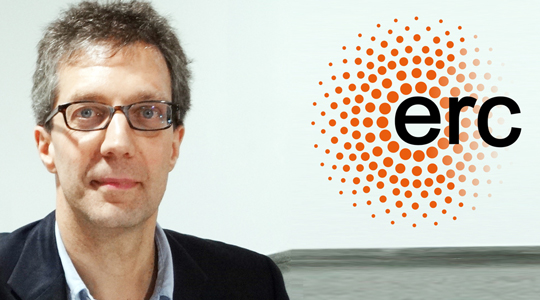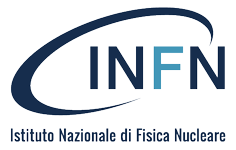 Develop a new ultra fast detector based on silicon and capable of providing a four-dimensional image of the
particles that pass through it, simultaneously "photographing" both the position and time of transit of the
particles: this is the core of the Ultra-Fast Silicon Detector (UFSD) project proposed by Nicolo Cartiglia of the
INFN Turin section and winner of an ERC Advanced Grant of 1.8 million euros lasting five years.
The project is based on the development of a new type of silicon detector, similar to those used in many
particle physics experiments, but which is characterised by the ability to determine the time of transit of a
particle in an extremely precise manner, with a resolution of approximately 10 picoseconds. That is: a detector
capable of an accuracy of 10 thousandths of a billionth of a second and equal, in the spatial dimensions, to
that of a very thin hair.
The possibility of adding the time dimension to the tracking process is critical to properly associate
the particles that belong to the same event, discarding instead those that transited in the detector at
subsequent times. This new type of technology can be applied in contexts in which the detector must be
very thin or very resistant to radiation, such as for example in oncological hadrontherapy in which very high
precision technologies are developed to be used in dosimetry.
The activity that led to proposing the Ultra-Fast Silicon Detector project began in 2013 as part of the research
of the Fifth National Commission INFN, which deals with technological and interdisciplinary research, and
thanks to the collaboration between the Turin INFN division, Trento and Florence INFN groups and the Bruno
Kessler Foundation (FBK). The Turin INFN division, which coordinate the project, will take care of the design,
drawing and testing of the sensors, and will be also involved in the development of a simulator of silicon
detectors (Weightfield2 project).
In 2014, UFSD was recognised as an "Italy-USA project of great scientific importance" and received a grant
for a period of two years from the Ministry of Foreign Affairs. In 2015, it has been included in the European
project AIDA2 (Advanced European Infrastructures for Detector Accelerators).
Develop a new ultra fast detector based on silicon and capable of providing a four-dimensional image of the
particles that pass through it, simultaneously "photographing" both the position and time of transit of the
particles: this is the core of the Ultra-Fast Silicon Detector (UFSD) project proposed by Nicolo Cartiglia of the
INFN Turin section and winner of an ERC Advanced Grant of 1.8 million euros lasting five years.
The project is based on the development of a new type of silicon detector, similar to those used in many
particle physics experiments, but which is characterised by the ability to determine the time of transit of a
particle in an extremely precise manner, with a resolution of approximately 10 picoseconds. That is: a detector
capable of an accuracy of 10 thousandths of a billionth of a second and equal, in the spatial dimensions, to
that of a very thin hair.
The possibility of adding the time dimension to the tracking process is critical to properly associate
the particles that belong to the same event, discarding instead those that transited in the detector at
subsequent times. This new type of technology can be applied in contexts in which the detector must be
very thin or very resistant to radiation, such as for example in oncological hadrontherapy in which very high
precision technologies are developed to be used in dosimetry.
The activity that led to proposing the Ultra-Fast Silicon Detector project began in 2013 as part of the research
of the Fifth National Commission INFN, which deals with technological and interdisciplinary research, and
thanks to the collaboration between the Turin INFN division, Trento and Florence INFN groups and the Bruno
Kessler Foundation (FBK). The Turin INFN division, which coordinate the project, will take care of the design,
drawing and testing of the sensors, and will be also involved in the development of a simulator of silicon
detectors (Weightfield2 project).
In 2014, UFSD was recognised as an "Italy-USA project of great scientific importance" and received a grant
for a period of two years from the Ministry of Foreign Affairs. In 2015, it has been included in the European
project AIDA2 (Advanced European Infrastructures for Detector Accelerators).







